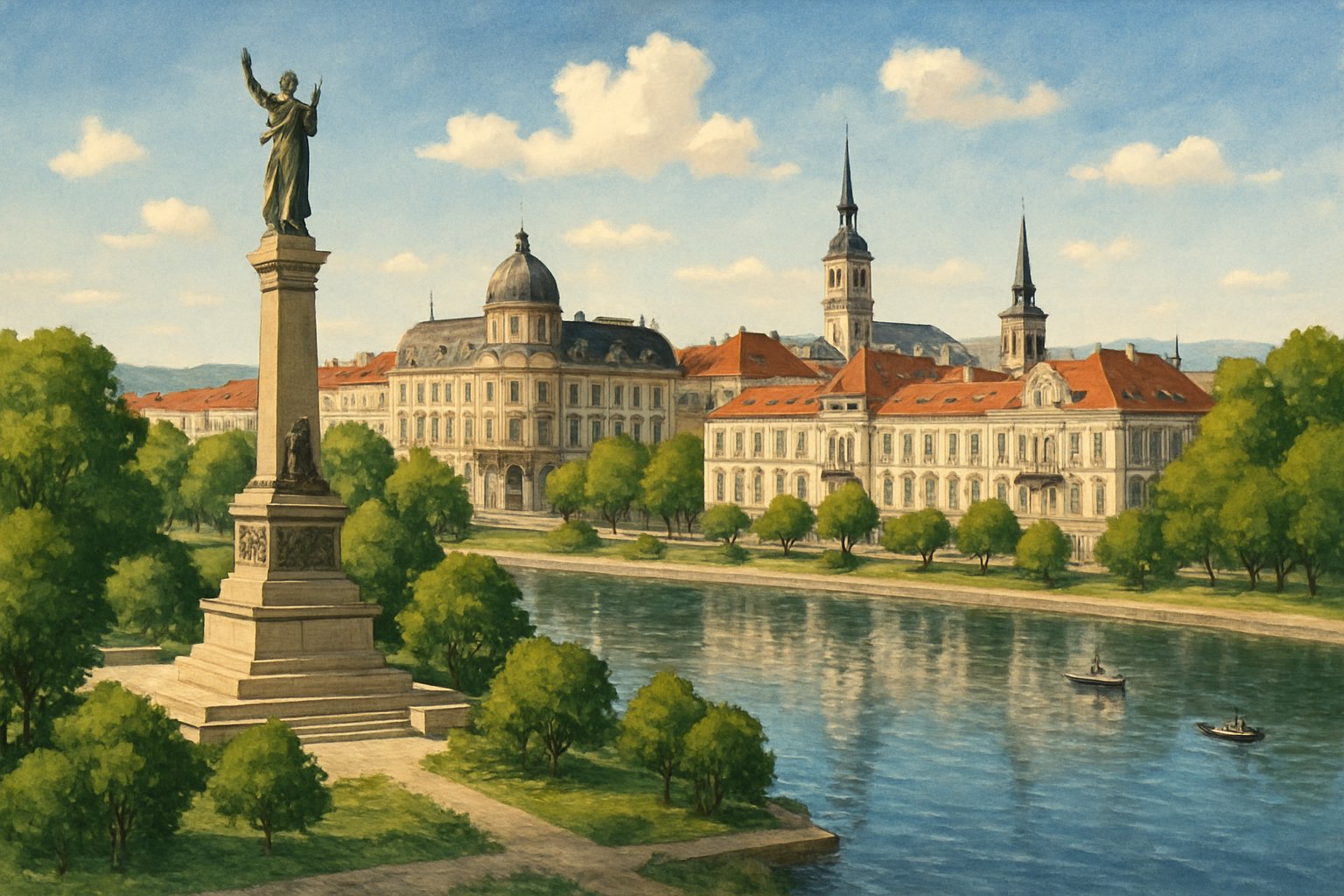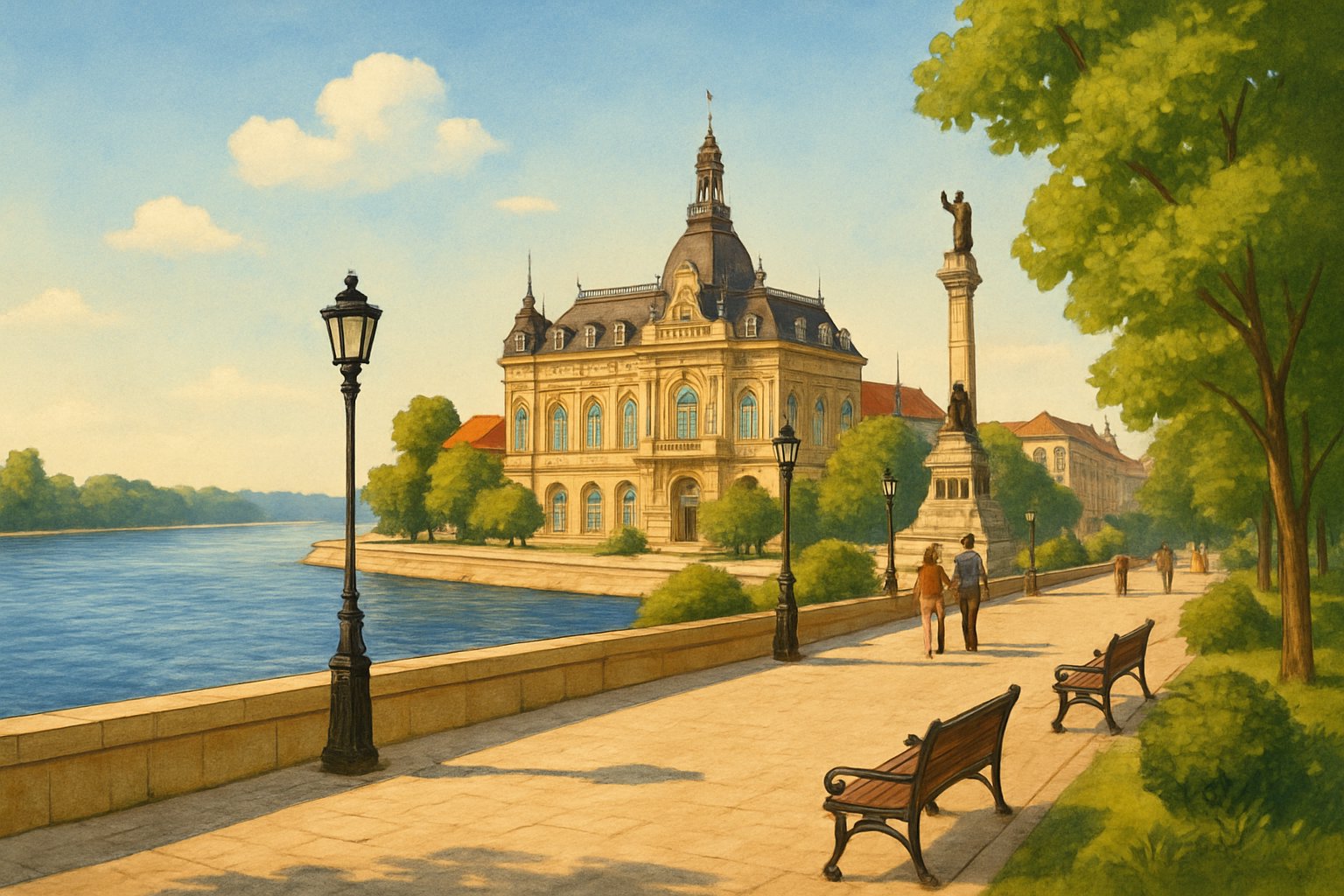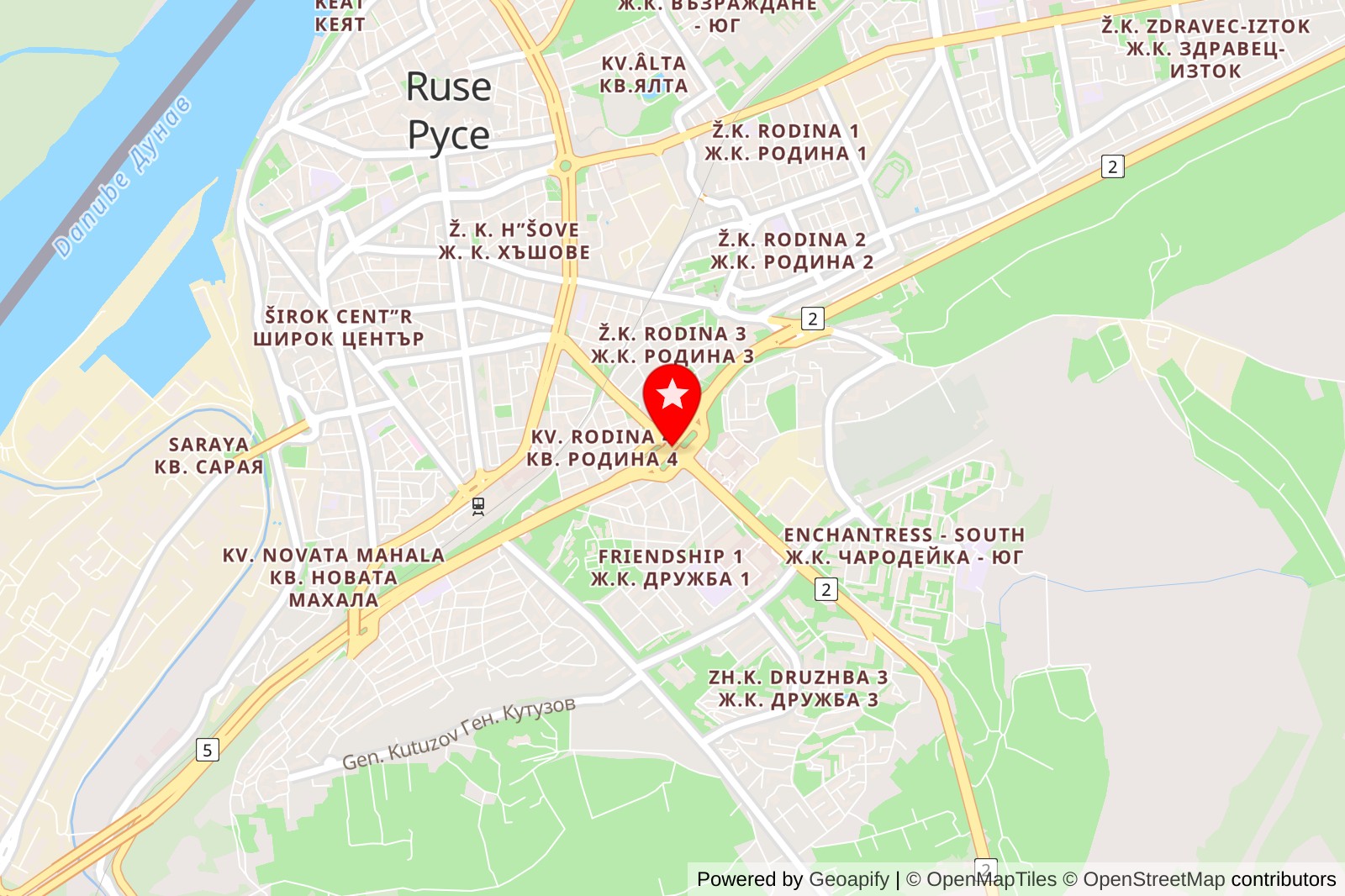Ruse sits on the Danube River in northern Bulgaria. It offers visitors a unique blend of European elegance and Bulgarian charm.
Ruse is known as “Little Vienna” for its beautiful Belle Époque architecture. The city’s sophisticated atmosphere sets it apart from other places in Bulgaria.

Whether you’re planning a visit or just curious, let’s look at what makes Ruse such a remarkable Danubian city. From its rich history to the cultural experiences, there’s a lot to discover here.
1) Ruse
Ruse sits right on the Danube in northern Bulgaria. We found it’s one of the country’s most important river ports and industrial centers.
The city feels lively, mixing old architecture with modern industry. Walking the streets, you’ll see Ruse’s rich history alongside its busy present.
Industrial parks dot the outskirts. The Danube Bridge links Ruse to Romania, making it a major trade route—honestly, it’s pretty impressive up close.
Cultural events pop up throughout the year. We saw info about art galleries, youth festivals, and outdoor performances.
The local government even keeps residents updated with live traffic feeds from the Danube Bridge and industrial areas. It’s a city that’s always moving.
Location: Ruse, Bulgaria
Website: Visit Website
A Brief History of Ruse
Ruse’s story stretches back over 2,000 years. It began as a Roman fortress and grew into one of Bulgaria’s most culturally significant cities.
The city played a crucial role during Bulgaria’s liberation from Ottoman rule. It later became a major center for trade and culture.
Roman Origins and Early Development
The history of Ruse goes back more than two millennia, beginning as the Roman fortress of Sexaginta Prista. The Romans picked this spot for its strategic value as a military and naval base along the Danube.
Before the Romans, Neolithic settlers lived here, drawn by fishing and farming opportunities. Later, Thracians built a major city before the Romans took over.
The Romans clearly saw the Danube’s potential. They set up a military and naval base that became a key frontier settlement.
Over the centuries, different peoples valued Ruse for its location. The city’s spot on the Danube made it a natural hub for trade and military activity.
Key Historical Landmarks
Ruse became especially important during the Bulgarian National Revival. The city was home to national heroes from the Bulgarian National Revival period and saw many firsts in Bulgaria.
A big turning point came in 1878, when Ruse and Bulgaria were liberated from Ottoman rule. That moment started a new era for the city.
After liberation, Ruse became a main center of culture and economy. It was made the shipping capital of Bulgaria, which really changed its future.
In the late 19th and early 20th centuries, Ruse flourished as Bulgaria’s most European city. That’s when you see the city’s unique architecture and cosmopolitan vibe come alive.
The large number of events that were pioneering to Bulgaria happened in Ruse. The city quickly became a major center of cultural development.
Culture and Local Life
Ruse celebrates its heritage with vibrant festivals. The city keeps traditions alive that reflect its role as Bulgaria’s cultural gateway.
The Danube shapes local customs, blending Bulgarian and European influences. It’s a mix you really feel walking around town.
Festivals and Annual Events
March Music Days is one of Bulgaria’s most prestigious music festivals. Each year, international performers and music lovers flock to Ruse for this event.
The festival turns the city into a cultural hotspot every spring. Concert halls and theaters fill with classical music, jazz, and even some contemporary surprises.
The Ruse Carnival comes alive every June. This colorful celebration of local traditions brings parades, music, and traditional dance to the streets.
Families join in with costumes and street performances. For three days, the Danube waterfront buzzes with celebration.
Unique Traditions in Ruse
Ruse’s nickname, “Little Vienna,” says a lot about its unique culture. The city’s rich cultural heritage blends Bulgarian customs with Central European style.
Local artisans still practice traditional crafts. Pottery, woodcarving, and textile work are alive and well here.
Coffee culture thrives in Ruse. Residents linger in cafes, chatting for hours—a habit that goes way back to the Ottoman period.
Traditional cuisine stands out, too. Danube fish dishes and regional specialties like ribena chorba (fish soup) and plakiya (baked fish with veggies) fill the menus.
Community festivals celebrate the harvest with folk music and dance. These gatherings in neighborhood squares bring together people of all ages.
Frequently Asked Questions

Visitors to Ruse often wonder about the city’s attractions, activities, and culture. Here are some answers to the most common questions about Bulgaria’s “Little Vienna.”
What are the top attractions to visit in Ruse?
Start with the historic city center. The 19th-century architecture gives Ruse its “Little Vienna” vibe, with elegant buildings and a European feel.
“Little Vienna”
The Rock Churches of Ivanovo, a UNESCO World Heritage site, are close by. These medieval churches carved into cliffs have amazing frescoes from the 14th century.
The Regional Historical Museum is worth a visit. It shows off Ruse’s development during Bulgaria’s early industrial period, with interactive displays and reconstructions.
Can you suggest some activities to do while in Ruse?
One of the most popular activities in Ruse is a day trip from Bucharest—usually about 69 EUR, and travelers seem to love it.
Walking along the Danube is a must. The riverside is peaceful and offers great views.
Exploring the old town on foot is also a treat. You’ll stumble on historic buildings, local shops, and cozy restaurants.
What is the historical significance of Ruse?
Ruse is called the “City of First Things” because so many innovations started here in Bulgaria. The city played a key role in early industrialization.
It’s also known as the “City of the free spirit”. Nobel Prize winner Elias Canetti was born in Ruse, which adds a bit of literary magic.
As Bulgaria’s largest Danube city, Ruse has always been a vital trade and cultural center. Its spot on the border with Romania made it a gateway to Central Europe.
How does the crime rate in Ruse compare to other Bulgarian cities?
Ruse is generally safe for tourists visiting in 2025. Safety tips for tourists in Ruse mostly focus on basic precautions.
The crime rate is about the same as in other Bulgarian cities of similar size. Petty theft can happen, but violent crime against tourists is rare.
Just keep your valuables secure and stay aware, as you would anywhere. Most visitors have a smooth, trouble-free stay.
What are some local dishes of Ruse that you would recommend?
Traditional Bulgarian dishes are easy to find in Ruse’s restaurants. Shopska salad, with tomatoes, cucumbers, peppers, and sirene cheese, is always a hit.
Banitsa—a flaky pastry filled with cheese and eggs—makes a great breakfast or snack. Most bakeries serve it fresh every day.
Kebapche and kyufte, both grilled meat favorites, come with sides like lyutenitsa (a pepper and tomato spread). These hearty meals go well with local Bulgarian wines.
Are there any cultural festivals in Ruse throughout the year?
Ruse hosts a bunch of cultural events every year, but the exact festival dates tend to shift around. The city’s got a pretty rich cultural scene, with music, art, and theater popping up all the time.
Since Ruse sits right on the Danube, it’s tied into regional celebrations that reach across several countries. You’ll catch plenty of traditional music and dance at these events.
If you’re planning a trip, it’s worth checking the local event calendars. Those seasonal festivals and cultural programs can really bring the place to life.

